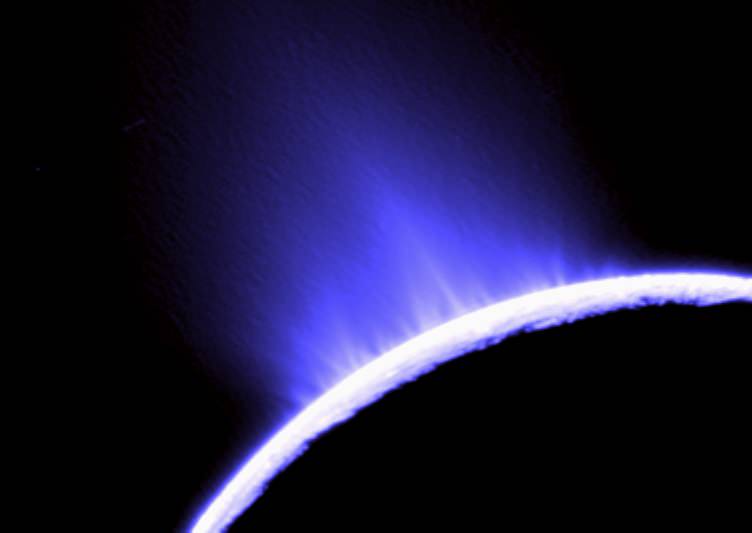[/caption] Planetary scientists say the geysers shooting from Saturn's moon Enceladus are likely to come from a subsurface sea of liquid water. During the Cassini spacecraft's fly-through of the geyser's plume on October 9, 2008, the instruments on board were able to measure the molecular weight of the chemicals in the ice. Detected were traces of sodium in the form of salt and sodium bicarbonate. The chemicals would have originated in the rocky core of Enceladus, so to reach a plume they must have leached from the core via liquid water.
Frank Postberg of the Max Planck Institute for Nuclear Physics in Heidelberg, Germany, and colleagues, are presenting their findings at the
European Geophysical Union meeting
in Vienna this week.
Although the salt could have been leached out by an ancient ocean which since been frozen solid, that freezing process would concentrate most of the salt very far from the surface of the moon's ice, says Julie Castillo of NASA's Jet Propulsion Laboratory in Pasadena, California, quoted in
New Scientist
. "It is easier to imagine that the salts are present in a liquid ocean below the surface," she says. "That's why this detection, if confirmed, is very important."
Observations of the plumes from Earth in 2007 detected no sign of sodium, casting doubt on such a subsurface sea. But the new in-situ detection may change our understanding of Enceladus' geysers.
Source:
New Scientist
 Universe Today
Universe Today
